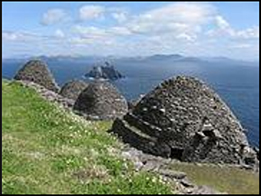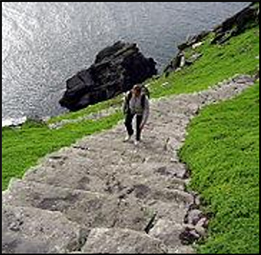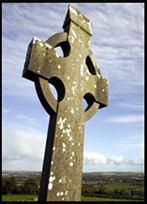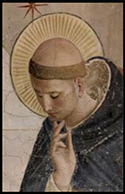Early Monasticism in the West of Ireland
Contributed by Peter Clarke
We can’t escape the subject of monasticism here on the Isle of Wight and we certainly have no desire to do so. We are familiar with the story of Medieval monasteries here at Quarr, St. Helens and Carisbrooke.
Gill and I were visiting family in Kerry recently and were fascinated by the story of early Medieval monastic life. Many of the islands of the west coast of Ireland contain the remains of early Christian Monasteries. They were the favoured sites due to both their isolation, and the abundance of rock for construction. A strong concentration can be found off the coast of County Kerry, with nine in total found on islands off the Iveragh and Dingle peninsula.


These monasteries are usually positioned on a terraced shelf high above sea level, and contain beehive shaped cells, oratories, small early medieval churches, a cemetery, crosses. (See pictures – above). The cells and oratories were of dry-built corbel construction.
The history of these early monasteries is uncertain. Some were inspired by Saint Finnia (470–549), St Ciaran and St Brendan, the founder of Clonfert in Galway. Pre-eminent among them is St Columba, responsible for two foundations on the mainland – at Derry and Durrow – before setting sail (Christ-like with twelve companions) to take the faith to Scotland.
In 563 he and his party make their base on the island of Iona, from which offshoots are later established as far afield as Lindisfarne (known for this reason as Holy Island) off the coast of Northumberland.
Life in these island monasteries was not always peaceful. The riches of the monastery attracted raids by the Vikings in the ninth century. Over the following centuries, they were plundered a number of times by thieves, who came from far and wide to help themselves to the monastery’s precious objects.

Above – early Celtic cross
The most telling images of early Christianity in Ireland are the beehive cells on the inhospitable rock of Skellig Michael, off the coast of Kerry. In these, from the 5th century, Celtic monks live in an ascetic tradition which relates back to the first desert fathers in Egypt. Cold, rather than heat, was their local penance.
Life for these early Christian monks was harsh. The attitude that prevailed was one of seeking physical and spiritual harmony with nature; a vision of God in every wonderful aspect of life on land, sea and air. The backbreaking work of building a monasteries with simple rudimentary tools, was not just a penance, but a joyous and fulfilling experience of marrying hands, skill, rock and fine design. The stormy seas and isolation constituted what many would consider a prison sentence, which had to be endured bravely and silently.
Later missionary efforts in Ireland during the 5th century – including those of St Patrick – gave the Christian religion a firmer footing. By the 6th century the time is ripe for the founding of the great Irish monasteries (powerful establishments, as opposed to the cluster of hermits’ cells on Skellig Michael) from which Celtic Christianity exerts its influence.

These remote monastic island communities survived until the 11th century. At this time monarch and churchmen united in welcoming a more structured form of the Christian Church with the beginning of a normal Diocesan system. Pragmatism and the emergence of well organised religious Orders Augustinians and Benedictines across Ireland ultimately marked the end for these small, independent island hermitages. Their time had ended. Nevertheless, they had made a valuable contribution to early monastic life in Ireland. Read about the famous Skellig monastery by clicking on this link:-